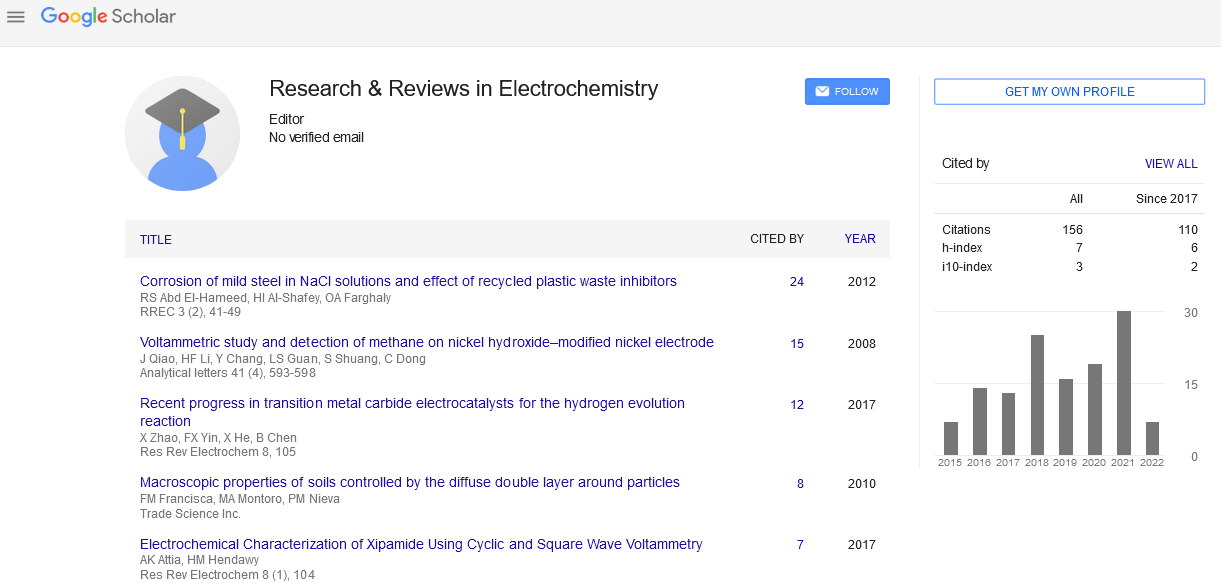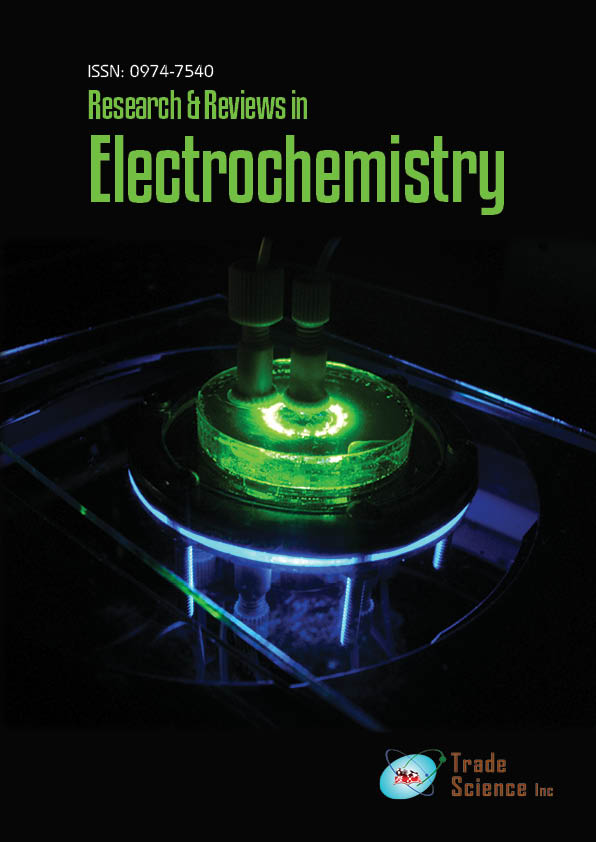Abstract
Use of the ionic liquid, 1-butyl-3-methylimidazolium tetrafluoroborate in the optimization of the performance of amperometric biosensors
Author(s): Natasha Ramroop Singh* , Dyer Narinesingh, Gurdial SinghCholesterol and Glucose biosensors were prepared by deposition of cholesterol oxidase and glucose oxidase respectively entrapped within a U.V. crosslinked poly (2-hydroxyethylmethacrylate), [p(HEMA)] hydrogel containing tetraethyleneglycol diacrylate onto a platinum electrode. The performance characteristics for the Pt/p(HEMA)/ChOx biosensor were as follows: Response time of 50 seconds at all cholesterol concentrations investigated, detection limit of 3.0 x 10-6M, liner range of 3 x 10-5 – 1.6 x 10-2Mof cholesterol, sensitivity of 56510ïÂÂA/M,working potential of +450mVwith a regression value of 0.986 for the calibration curve (y = 5.651x). The Pt/ p(HEMA)/GOx optimized sensor parameters were: an enzyme loading of 1365 unitsGOx/cm2;aHEMA:TEGDAratio of 2.75:1%vol.; a filmthickness of 0.2mm; a stirring speed of 450 r.p.m, and a temperature optimumof 50ï‚°C, a linear response over a glucose concentration range of 1 x 10-5 to 1 x 10-3 mM(r = 0.994),with a detection limit of 6.0 x 10-6M,with a response time of 45 seconds at all glucose concentrations investigated. These biosensors retained an average of 90% of initial enzyme activity when stored in the ionic liquid, [bmim][BF4], at 4 ºC after six months.

